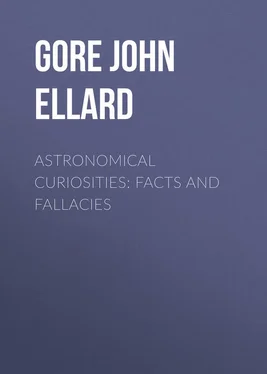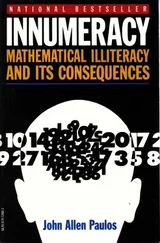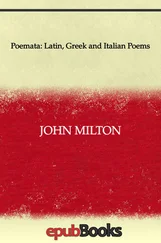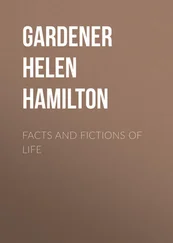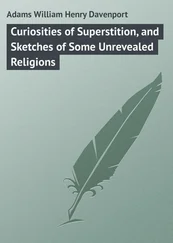John Gore - Astronomical Curiosities - Facts and Fallacies
Здесь есть возможность читать онлайн «John Gore - Astronomical Curiosities - Facts and Fallacies» — ознакомительный отрывок электронной книги совершенно бесплатно, а после прочтения отрывка купить полную версию. В некоторых случаях можно слушать аудио, скачать через торрент в формате fb2 и присутствует краткое содержание. Жанр: Физика, foreign_antique, foreign_prose, на английском языке. Описание произведения, (предисловие) а так же отзывы посетителей доступны на портале библиотеки ЛибКат.
- Название:Astronomical Curiosities: Facts and Fallacies
- Автор:
- Жанр:
- Год:неизвестен
- ISBN:нет данных
- Рейтинг книги:5 / 5. Голосов: 1
-
Избранное:Добавить в избранное
- Отзывы:
-
Ваша оценка:
- 100
- 1
- 2
- 3
- 4
- 5
Astronomical Curiosities: Facts and Fallacies: краткое содержание, описание и аннотация
Предлагаем к чтению аннотацию, описание, краткое содержание или предисловие (зависит от того, что написал сам автор книги «Astronomical Curiosities: Facts and Fallacies»). Если вы не нашли необходимую информацию о книге — напишите в комментариях, мы постараемся отыскать её.
Astronomical Curiosities: Facts and Fallacies — читать онлайн ознакомительный отрывок
Ниже представлен текст книги, разбитый по страницам. Система сохранения места последней прочитанной страницы, позволяет с удобством читать онлайн бесплатно книгу «Astronomical Curiosities: Facts and Fallacies», без необходимости каждый раз заново искать на чём Вы остановились. Поставьте закладку, и сможете в любой момент перейти на страницу, на которой закончили чтение.
Интервал:
Закладка:
It has been stated by some writer that the moon as seen with the highest powers of the great Yerkes telescope (40 inches aperture) appears “just as it would be seen with the naked eye if it were suspended 60 miles over our heads.” But this statement is quite erroneous. The moon as seen with the naked eye or with a telescope shows us nearly a whole hemisphere of its surface. But if the eye were placed only 60 miles from the moon’s surface, we should see only a small portion of its surface. In fact, it is a curious paradox that the nearer the eye is to a sphere the less we see of its surface! The truth of this will be evident from the fact that on a level plain an eye placed at a height, say 5 feet, sees a very small portion indeed of the earth’s surface, and the higher we ascend the more of the surface we see. I find that at a distance of 60 miles from the moon’s surface we should only see a small portion of its visible hemisphere (about 1⁄90th). The lunar features would also appear under a different aspect. The view would be more of a landscape than that seen in any telescope. This view of the matter is not new. It has been previously pointed out, especially by M. Flammarion and Mr. Whitmell, but its truth is not, I think, generally recognized. Prof. Newcomb doubts whether with any telescope the moon has ever been seen so well as it would be if brought within 500 miles of the earth.
A relief map of the moon 19 feet in diameter was added, in 1898, to the Field Columbian Museum (U.S.A.). It was prepared with great care from the lunar charts of Beer and Mädler, and Dr. Schmidt of the Athens Observatory, and it shows the lunar features very accurately. Its construction took five years.
On a photograph of a part of the moon’s surface near the crater Eratosthenes, Prof. William H. Pickering finds markings which very much resemble the so-called “canals” of Mars. The photograph was taken in Jamaica, and a copy of it is given in Prof. Pickering’s book on the Moon, and in Popular Astronomy , February, 1904.
Experiments made in America by Messrs. Stebbins and F. C. Brown, by means of selenium cells, show that the light of the full moon is about nine times that of the half moon; 82 82 Prof. W. H. Pickering found 12 times (see p. 1).
and that “the moon is brighter between the first quarter and full than in the corresponding phase after full moon.” They also find that the light of the full moon is equal to “0·23 candle power,” [83] Prof. W. H. Pickering found 12 times (see p. 1).
that is, according to the method of measurement used in America, its light is equal to 0·23 of a standard candle placed at a distance of one metre (39·37 inches) from the eye. 83 83 Nature , January 30, 1908.
Mr. H. H. Kimball finds that no less than 52 per cent. of the observed changes in intensity of the “earth-shine” visible on the moon when at or near the crescent phase is due to the eccentricity of the lunar orbit, and “this is probably much greater than could be expected from any increase or diminution in the average cloudiness over the hemisphere of the earth reflecting light to the moon.” 84 84 Nature , September 5, 1901.
The “moon maiden” is a term applied to a fancied resemblance of a portion of the Sinus Iridum to a female head. It forms the “promontory” known as Cape Heraclides, and may be looked for when the moon’s “age” is about 11 days. Mr. C. J. Caswell, who observed it on September 29, 1895, describes it as resembling “a beautiful silver statuette of a graceful female figure with flowing hair.”
M. Landerer finds that the angle of polarization of the moon’s surface – about 33° – agrees well with the polarizing angle for many specimens of igneous rocks (30° 51′ to 33° 46′). The polarizing angle for ice is more than 37°, and this fact is opposed to the theories of lunar glaciation advanced by some observers. 85 85 Ibid. , July 31, 1890.
Kepler states in his Somnium that he saw the moon in the crescent phase on the morning and evening of the same day (that is, before and after conjunction with the sun). Kepler could see 14 stars in the Pleiades with the naked eye, so his eyesight must have been exceptionally keen.
Investigations on ancient eclipses of the moon show that the eclipse mentioned by Josephus as having occurred before the death of Herod is probably that which took place on September 15, B.C. 5. This occurred about 9.45 p.m.; and probably about six months before the death of Herod (St. Matthew ii. 15).
The total lunar eclipse which occurred on October 4, 1884, was remarkable for the almost total disappearance of the moon during totality. One observer says that “in the open air, if one had not known exactly where to look for it, one might have searched for some time without discovering it. I speak of course of the naked eye appearance.” 86 86 Nature , October 16, 1884.
On the other hand the same observer, speaking of the total eclipse of the moon on August 23, 1877, which was a bright one, says —
“The moon even in the middle of the total phase was a conspicuous object in the sky, and the ruddy colour was well marked. In the very middle of the eclipse the degree of illumination was as nearly as possible equal all round the edge of the moon, the central parts being darker than those near the edge.”
In Roger de Hovedin’s Chronicle (A.D. 756) an account is given of the occultation of “a bright star,” by the moon during a total eclipse. This is confirmed by Simeon of Durham, who also dates the eclipse A.D. 756. This is, however, a mistake, the eclipse having occurred on the evening of November 23, A.D. 755. Calvisius supposed that the occulted “star” might have been Aldebaran. Pingré, however, showed that this was impossible, and Struyck, in 1740, showed that the planet Jupiter was the “star” referred to by the early observer. Further calculations by Hind (1885) show conclusively that Struyck was quite correct, and that the phenomenon described in the old chronicles was the occultation of Jupiter by a totally eclipsed moon – a rather unique phenomenon. 87 87 Nature , February 19, 1885.
An occultation of Mars by the moon is recorded by the Chinese, on February 14, B.C. 69, and one of Venus, on March 30, A.D. 361. These have also been verified by Hind, and his calculations show the accuracy of these old Chinese records.
It has been suggested that the moon may possibly have a satellite revolving round it, as the moon itself revolves round the earth. This would, of course, form an object of great interest. During the total lunar eclipses of March 10 and September 3, 1895, a careful photographic search was made by Prof. Barnard for a possible lunar satellite. The eclipse of March 10 was not very suitable for the purpose owing to a hazy sky, but that of September 3 was “entirely satisfactory,” as the sky was very clear, and the duration of totality was very long. On the latter occasion “six splendid” photographs were obtained of the total phase with a 6-inch Willard lens. The result was that none of these photographs “show anything which might be taken for a lunar satellite,” at least any satellite as bright as the 10th or 12th magnitude. It is, of course, just possible that the supposed satellite might have been behind the moon during the totality.
With reference to the attraction between the earth and moon, Sir Oliver Lodge says —
“The force with which the moon is held in its orbit would be great enough to tear asunder a steel rod 400 miles thick, with a tenacity of 30 tons to the square inch, so that if the moon and earth were connected by steel instead of gravity, a forest of pillars would be necessary to whirl the system once a month round their common centre of gravity. Such a force necessarily implies enormous tensure or pressure in the medium. Maxwell calculates that the gravitational stress near the earth, which we must suppose to exist in the invisible medium, is 3000 times greater than what the strongest steel can stand, and near the sun it should be 2500 times as great as that.” 88 88 Nature , January 14, 1909, p. 323.
Интервал:
Закладка:
Похожие книги на «Astronomical Curiosities: Facts and Fallacies»
Представляем Вашему вниманию похожие книги на «Astronomical Curiosities: Facts and Fallacies» списком для выбора. Мы отобрали схожую по названию и смыслу литературу в надежде предоставить читателям больше вариантов отыскать новые, интересные, ещё непрочитанные произведения.
Обсуждение, отзывы о книге «Astronomical Curiosities: Facts and Fallacies» и просто собственные мнения читателей. Оставьте ваши комментарии, напишите, что Вы думаете о произведении, его смысле или главных героях. Укажите что конкретно понравилось, а что нет, и почему Вы так считаете.
